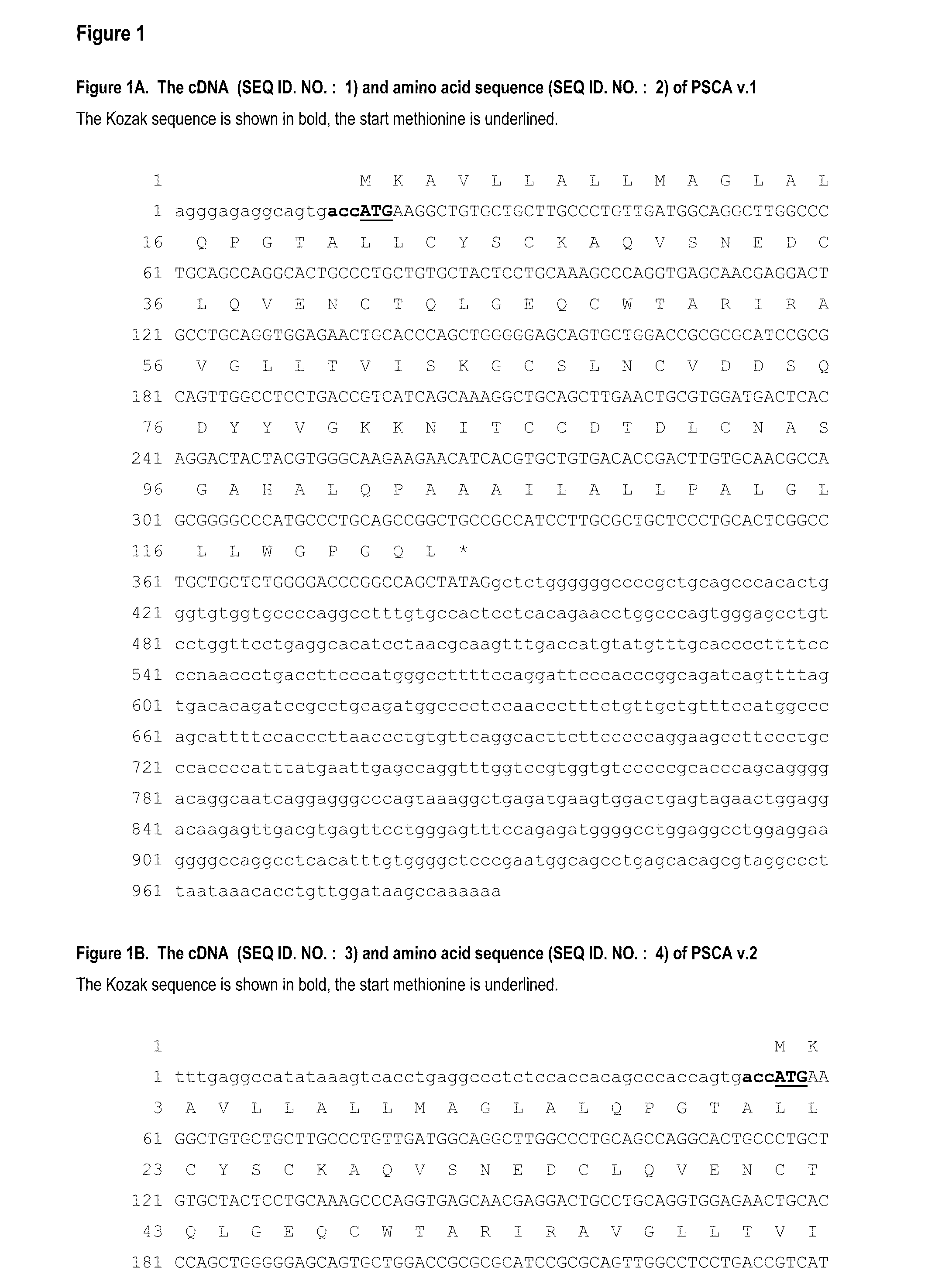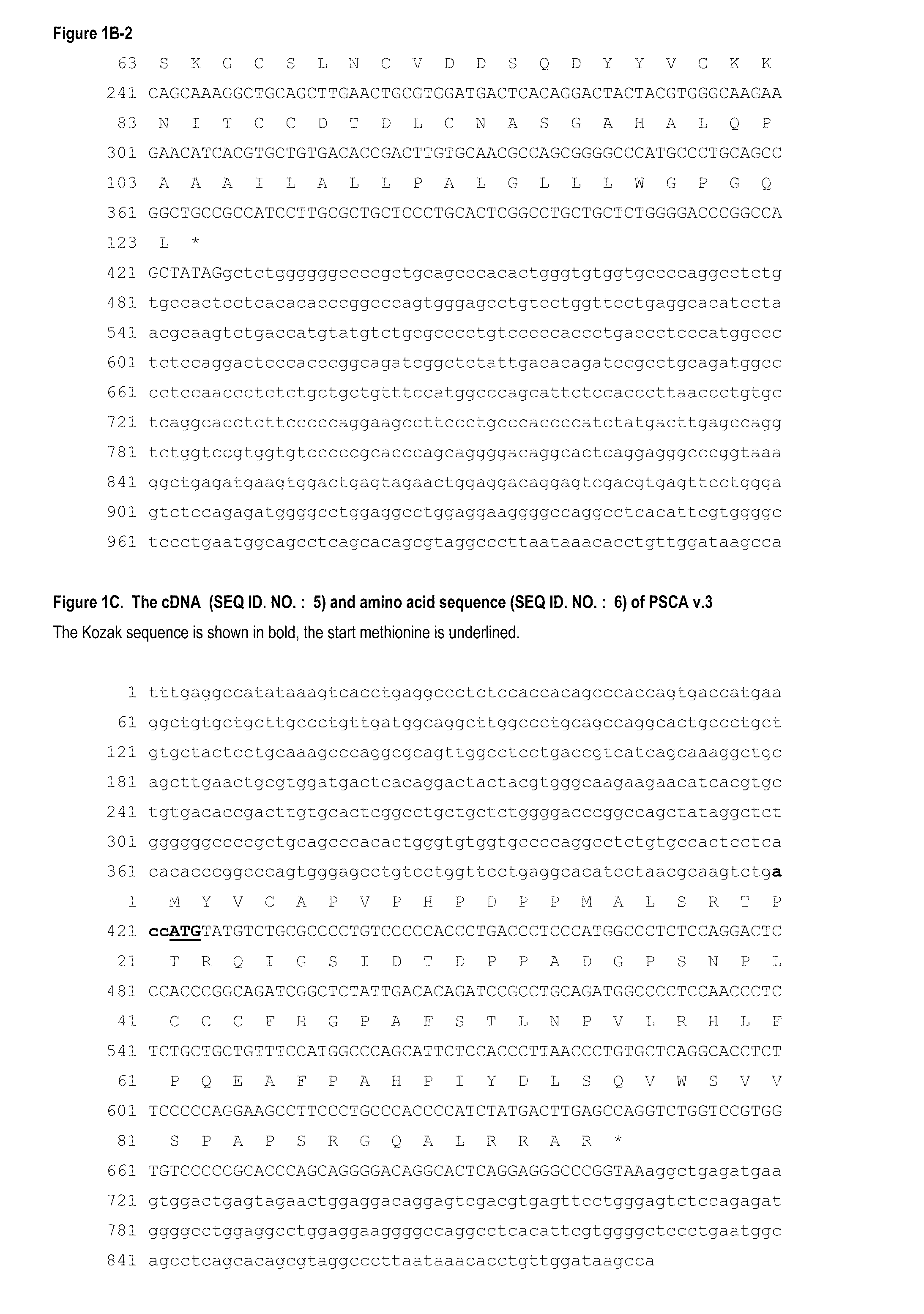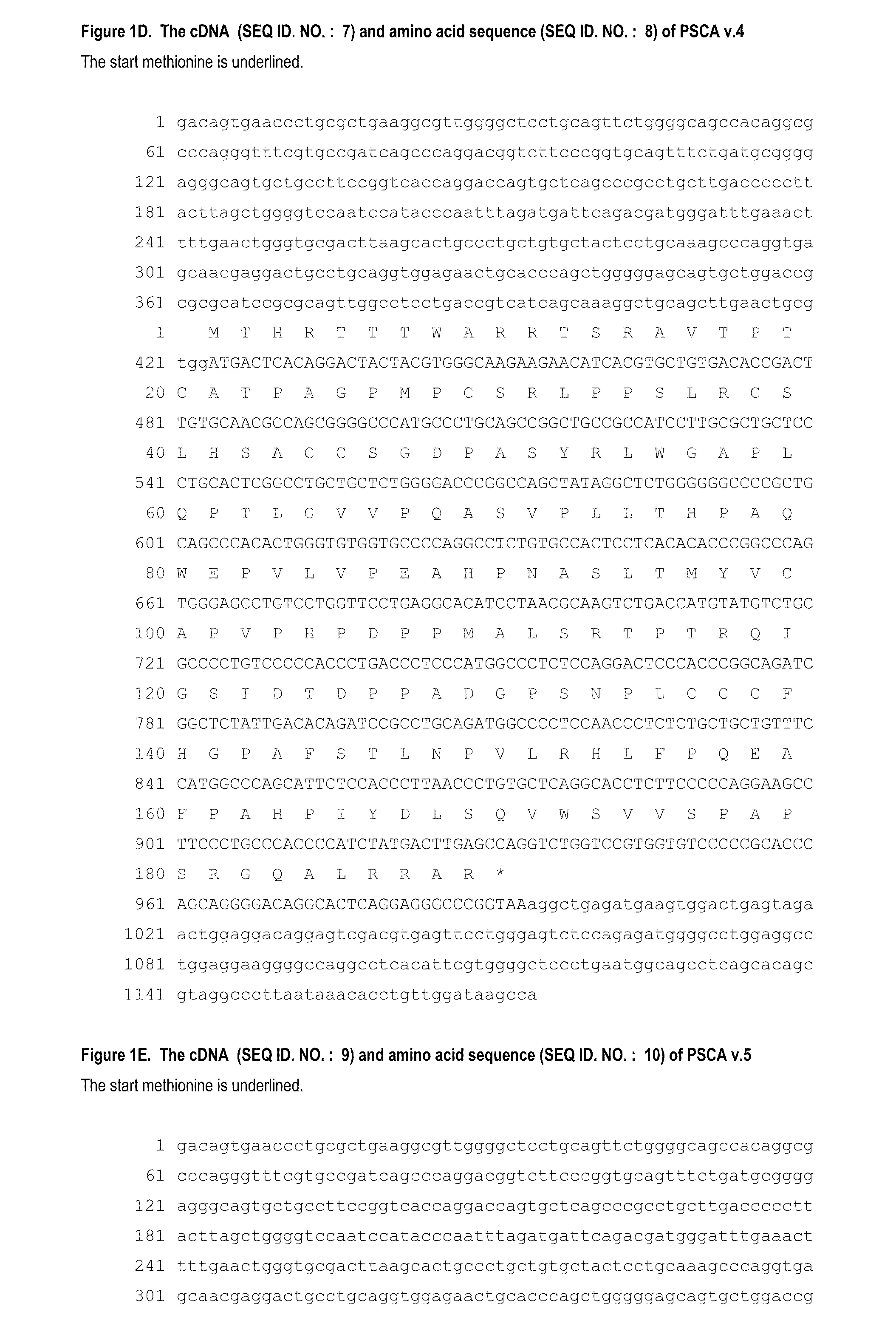Antibodies and related molecules that bind to psca proteins
a technology of psca and related molecules, applied in the field of antibodies, can solve the problems of ineffective treatment for many patients, undesirable consequences, and still no effective treatment for metastatic prostate cancer, and achieve the effect of inhibiting the production or function of psca, transcription, translation, processing or function
- Summary
- Abstract
- Description
- Claims
- Application Information
AI Technical Summary
Benefits of technology
Problems solved by technology
Method used
Image
Examples
example 1
Expression Analysis of PSCA Variants in Normal Tissues and Patient Specimens
[0526]Previously, PSCA, herein referred to as PSCA v.1, was identified as an antigen expressed in prostate cancer. Its expression was detected in greater than 80% of primary prostate cancers and in the majority of prostate metastasis. It has also been shown to be expressed in bladder cancer, ovary cancer, and pancreatic cancer; these cancers are listed in Table I. By immunohistochemical analysis, PSCA has been shown to be overexpressed on the cell surface of most urothelial transitional carcinoma, and in 60% of primary pancreatic adenocarcinomas. The PSCA expression data has been reported in patent publications (PCT / US98 / 04664, PCT / US / 28883, PCT / US00 / 19967) and in peer-reviewed articles (Saffran et al., Proc Natl Acad Sci USA. 2001 Feb. 27; 98(5): 2658-2663; Amara et al., Cancer Res. 2001 Jun. 15; 61(12): 4660-65; Reiter et al., Proc Natl Acad Sci USA. 1998 Feb. 17; 95(4): 1735-40; Argani et al., Cancer Res....
example 2
Splice Variants of PSCA
[0534]As used herein, the term variant includes transcript variants and single nucleotide polymorphisms (SNPs). Transcript variants are variants of mature mRNA from the same gene which arise by alternative transcription or alternative splicing. Alternative transcripts are transcripts from the same gene but start transcription at different points. Splice variants are mRNA variants spliced differently from the same transcript. In eukaryotes, when a multi-exon gene is transcribed from genomic DNA, the initial RNA is spliced to produce functional mRNA, which has only exons and is used for translation into an amino acid sequence. Accordingly, a given gene can have zero to many alternative transcripts and each transcript can have zero to many splice variants. Each transcript variant has a unique exon makeup, and can have different coding and / or non-coding (5′ or 3′ end) portions, from the original transcript. Transcript variants can code for the same, similar or dif...
example 3
Single Nucleotide Polymorphisms of PSCA
[0540]A Single Nucleotide Polymorphism (SNP) is a single base pair variation in a nucleotide sequence at a specific location. At any given point of the genome, there are four possible nucleotide base pairs: A / T, C / G, G / C, and T / A. As used herein, an allele is one of a series of alternative forms of a given gene, differing in DNA sequence, and affecting a product (RNA and / or protein).
[0541]A SNP that occurs on a cDNA is called a cSNP. This cSNP may change amino acids of the protein encoded by the gene and thus change the function of the protein. Some SNPs cause inherited diseases; others contribute to quantitative variations in phenotype and reactions to environmental factors including diet and drugs among individuals. Therefore, the existence of a SNP and / or combinations of alleles (called haplotypes) have many useful applications, such as diagnosis of inherited diseases, determination of drug reactions and dosage, identification of genes respo...
PUM
| Property | Measurement | Unit |
|---|---|---|
| fluorescent | aaaaa | aaaaa |
| bioluminescent | aaaaa | aaaaa |
| chemiluminescent | aaaaa | aaaaa |
Abstract
Description
Claims
Application Information
 Login to View More
Login to View More - R&D
- Intellectual Property
- Life Sciences
- Materials
- Tech Scout
- Unparalleled Data Quality
- Higher Quality Content
- 60% Fewer Hallucinations
Browse by: Latest US Patents, China's latest patents, Technical Efficacy Thesaurus, Application Domain, Technology Topic, Popular Technical Reports.
© 2025 PatSnap. All rights reserved.Legal|Privacy policy|Modern Slavery Act Transparency Statement|Sitemap|About US| Contact US: help@patsnap.com



